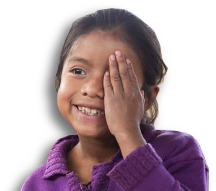Dear Friends,
It’s hard to believe that 3 months have passed since the devastating earthquakes struck Nepal. We’ve been busy providing both emergency relief and helping the people of Nepal rebuild thanks to your support. In our last update, we described how Seva focused on procuring and distributing many truck-loads of emergency supplies in Gorkha and Dhading districts. We also reported on the development of a six-month plan to ensure that vulnerable communities, including women and ethnic minorities, would have shelter, food, and income generating opportunities needed to build their future.
To achieve our plan, we partnered with a number of local and international organizations in order to implement a broad array of recovery activities as quickly as possible. Some of these projects and partnerships include:
Social Educational Environmental Development Services (SEEDS): Supply essential food for earthquake affected communities in the Nubri Valley. We’ve partnered to procure rice, salt and 70 hours of helicopter time to provide 960 extremely isolated households with essential food supplies.
All Hands Volunteers (AHV): Provided funding to build 75-100 permanent, earthquake- resilient homes in the heavily damaged district of Sindhupalchowk.
Light of Buddhadharma Foundation International (LBDFI): Purchase and transported metal roofing sheets to earthquake-affected villages identified through their network of local monasteries and nunneries. These are enabling the construction of around 130 shelters spread throughout the Himalayan Region.
American Himalayan Foundation (AHF) and their long-term grass roots partners. Seva co-funded seven projects ranging from shelter and school construction, to income generating activities for affected families. These include:
STOP Girl Trafficking: Provided temporary classrooms for damaged schools. This initiative finds the girls most at risk, putting and keeping them in school and educating them and their families about the dangers and realities of trafficking. Our funding helped to provide 54 temporary classrooms, some in the form of tents and some built of corrugated tin sheets, to selected schools in Sindupalchowk and Ramecchap.
The United Women’s Savings and Loan Organization (UWSLO), aka “The Goat Ladies”: an all-woman collective in the rural Nuwakot district of Nepal that is changing the status of women there. UWSLO helps the poorest village women earn a sustainable income by offering them micro-loans and the training to become goat breeders and vegetable producers. Sadly, over 100 of UWSLO’s 700 members lost their lives in the April 25th earthquake, and most members’ homes were destroyed, as were their plastic greenhouses, and equipment. Seva funding replaced destroyed structures, equipment, and materials and built a new irrigation system.
Navjyoti School for the Handicapped: brings dignity and understanding to 80 mentally and developmentally challenged kids’ otherwise difficult lives. The main building withstood the earthquakes well, but the one-story vocational training block and adjoining compound wall suffered much damage. Funds from Seva covered demolition and rebuilding of the structure.
Kunsang Choling Nunnery: The 50 nuns who call Kunsang Choling home have been relocated outside under tents and tarps. Heavily damaged, the building looked as if it has been shaken from its foundation. Seva granted funding for repairing the nuns’ living quarters, kitchen, prayer hall, and stairs.
Namche Dental Clinic: At over 11,200 feet, Namche Dental is the world’s highest dental clinic and the only dental care facility in the Khumbu. The clinic treats about 1,300 people a year. The main building was severely damaged in the first earthquake. Immediately, the staff rescued the clinic’s equipment and relocated it to the local government office for safe keeping. Unfortunately, that building and all of their equipment and supplies were destroyed in the second earthquake. Funds from Seva will rebuild the clinic and replace lost equipment and supplies.
Bakhang Nuns Transitional Support: Bakhang Nunnery in Sindhupalchowk, close to the Tibet border, offered a stable and peaceful home for 212 nuns ranging in age from 19 to 98, many of whom were Tibetan refugees who escaped to Nepal. When the first earthquake struck, the nuns were assembled outside for medical checkups, which kept most of them safe from the buildings that collapsed. Most of the nuns have since relocated to tents and a temporary shelter in Lalitpur. Seva co-funded food for the nuns for six months, until repairs to their nunnery are completed.
Namgyal Middle School in Kathmandu gives 527 Tibetan refugee children in lower kindergarten through grade 8 a first-rate education in Tibetan, Nepali and English. Both earthquakes severely damaged the school structures. Engineers have only permitted use of the ground floor, and classes for students in lower kindergarten through grade 3 are being held outside under tarps. Repairs are being co-funded by Seva for the hostel, kitchen, staff quarters, office building, music room and library.
I want to assure you that Seva’s eye care programs in Nepal continue at full pace despite the additional effort to help survivors of the earthquakes regain some semblance of normalcy and wellbeing. In my next update, I’ll share plans to rebuild damaged eye clinics and other health centers in the earthquake impact zone.
Yours in service,
Jack Blanks
Executive Director
Seva Foundation

Photo courtesy of SEEDS..

Photo courtesy of American Himalayan Foundation

Photo courtesy of American Himalayan Foundation
Dear Friends,
As our plane descended towards Nepal’s Kathmandu airport I was concerned and unsure of what we would find. Recent televised images of entire neighborhoods ravaged by the earthquake's destructive force replayed in my mind. My colleague, Heidi, and I had come to spend time with our staff and partners to identify areas where Seva could provide additional support to Nepal as it begins the challenging task of rebuilding.
Now, as I sit in the airport waiting to head home, one week later, I know that our team is fine and will continue to play a role in Nepal’s recovery.
We saw the destruction firsthand but also the resilience and commitment of our staff and partners as they worked to aid the victims of the earthquake and to rebuild the country. Despite two major quakes and hundreds of aftershocks, they worked from day one to procure thousands of tents, tarps, mats, blankets and essential food. Through your generosity, Seva and our partners coordinated the delivery of some of the first relief materials to Dhading and Gorkha districts, providing food and shelter materials to some of the most hard-hit and isolated communities.
Working with local leaders and partners, Seva is shifting from emergency relief to focus our remaining earthquake funds on rebuilding Nepal’s eye care infrastructure and to fill crucial gaps in basic services.
This past week, we worked with our staff to develop a six-month plan to ensure that vulnerable communities, including women and ethnic minorities, have shelter, food, and income generating opportunities so that they are equipped with the tools they need to build their future. Seva and our partners will have a lasting impact on people who need it most, thanks to your support.
Because of your compassion and the hundreds of letters you shared through the #DearSevaNepal campaign, our Nepal team members are more than just fine, they are inspired. Your notes of hope and love bolstered their energy and reminded them that they are not alone. “Thank you again for all of the letters,” said Parami, Seva’s Program Manager, as we said goodbye. “I feel so good that I am part of such a big family.”
And I also feel so good that I am also part of this big Seva family. Thank you again for all of your support.
Meanwhile, our principle mission to restore sight and prevent blindness goes on unabated. We will continue to keep you updated on the work we are doing in Nepal, as well as around the world.
With much gratitude,
Jack Blanks
Executive Director
Seva Foundation

Seva's executive director Jack Blanks and Seva Nepal program director R.P. Kandel discussing delivery of relief supplies.

Heidi Chase, Associate Director of Seva's Innovation & Sight Program, with young eye patients.

Seva Family Reunion: the Seva Nepal team and family members with Jack and Heidi from HQ take a break in the park.
Dear Seva Community,
As I write this update on Seva’s earthquake response activities, I am pleased to be doing so from Nepal. It has been one month since the first of two devastating earthquakes struck Nepal, followed by hundreds of aftershocks.
The United Nations estimates that more than 8,000 people have been killed, over 870,000 homes destroyed or badly damaged, and 2.8 million people remain in need of humanitarian assistance.
Seva teams in Berkeley and Nepal continue to work tirelessly to support relief and recovery efforts bringing aid and hope to Nepali people living in remote, hard to reach communities that have been devastated near the quake’s epicenter.
Your support of these activities has been vital. Thousands of Seva donors and friends around the world have turned compassion into action by making contributions to our Nepal Recovery Fund, organizing fundraisers and events, sharing about Seva’s response on social media, and in so many other wonderful ways.
Thanks to you, many thousands of Nepalese people, including entire villages, have already been helped by Seva.
With 37 years of on-the-ground experience working throughout Nepal, Seva staffers and our network of partner organizations were able to spring into action within hours of the earthquake. In the month since, Seva has sent multiple convoys of trucks and tractors with critically needed supplies providing food, shelter and other basic necessities to families who have lost everything.
Because we are entering the monsoon season, with heavy rains already falling, one of Seva's priority initiatives has been to distribute large family-size tents to people whose homes were reduced to rubble. Our focus has been on providing this aid to families in the most remote areas where aid has been scant or non-existent. These villages are challenging to reach due to landslides that have made rudimentary roads and foot trails impassable for days, even weeks, after the earthquake.
Below, you'll find some photos on your support in action. These images demonstrate the incredible efforts mounted by Seva's staff and partners to help communities in need.
Looking forward:
In coordination with local authorities and the international relief effort, we continue to assess the situation on the ground. Accompanied by another Seva HQ colleague I am now in Nepal to assist with planning the next phase of support in the earthquake zone. With so many homes destroyed and schools, clinics and other public service infrastructure in ruins, Seva remains committed to Nepal for the long-term recovery effort. Working with our partner eye hospitals, other international non-governmental organizations (INGO), and the government, Seva will transition its focus from emergency relief to addressing the longer-term need for rebuilding health care capacity and re-establishing vital community services.
To all who have shown your deep compassion for the people of Nepal and have given so generously to relieve their suffering, we remain very grateful. We will continue to provide regular updates. You will find these posted here on our website, as well as on Facebook and through Twitter.
Feel free share this information with others as well as the link to our Nepal Relief and Recovery Fund: www.seva.org/Nepal_Earthquake_Fund.
Checks can also be mailed to Seva headquarters (please write Nepal Relief on your check):
Seva Foundation
1786 Fifth Street
Berkeley, CA 94710
Donations can also be called in at 800.223.7382
Through all of this, Seva's eye care programs continue to also provide vital sight-saving services to people in need around the globe.
Yours in gratitude,
Jack Blanks
Executive Director

Each tractor carries 7500 lbs of rice, tents, and other relief supplies.

A large family-size tent (one of hundreds) is erected at a distribution point so that villagers can see how they are set up. Each family (in this picture from the village of Uhiya with 320 households), will receive a tent, tarps and food for the 16 hour trek home. In all about 200 pounds of supplies are provided to each family.

Tents and tarps are organized for distribution.

Food supplies are also staged for distribution.

Villagers, many of whom have lost their homes, wait patiently to receive emergency supplies.

Houses that were damaged are outfitted with tarps so that families and their harvest will be able to stay dry as the rainy season begins.


Above, trucks loaded with hundreds of tents and tarpaulins procured from a tent factory in India cross the border into Nepal.

Tents and food are transferred from trucks to farm tractors pulling trailers as Seva relief teams prepare to leave paved roads in order to reach some of the most remote villages in the earthquake impact zone.

Tractors are the only vehicles able to navigate these muddy roads, often obstructed by boulders and landslides.

Road conditions worsen as a Seva tractor caravan approaches distribution areas where people from remote villages have walked as much as 16 hours to receive their first relief supplies.

A scene repeated many times over the past month where villagers from the Gorkha and Dhading Districts welcome a Seva caravan that is carrying tents, tarps, food and other relief supplies. 
Nearly 100% of homes and businesses in many of these remote villages have been destroyed or sustained major damage.

The team prepares to unload and to create a staging area for the distribution of emergency aid supplies for villagers who have walked many hours from communities where the only access is on foot.
Dear Seva Community,
On Tuesday morning, May 12th, another large 7.3-magnitude earthquake shook Nepal. We are relieved again to know that our staff are all safe.
The Seva teams in Berkeley and Nepal are working diligently to assist the people affected by the earthquakes and we want to take a moment to update you on how the the tremendous outpouring of support Seva received has been put to work and future activities planned to assist the people of Nepal.
Seva organized relief efforts within hours of the first earthquake with two long-time partner hospitals, the Lumbini Eye Institute (LEI) and Bharatpur Eye Hospital (BEH). These hospitals are located just south of the earthquake zone and were undamaged by the quake. Both partners were eager to combine forces to mount relief convoys to heavily impacted districts. In coordination with local authorities, we prioritized Gorkha and Dhading, two areas near the epicenter, as requiring our support.
Seva donors funded the purchase of essential supplies, from local markets in nearby India. Seva mobilized convoys of hospital vehicles and locally-hired trucks and tractors to aid in the delivery of supplies.
By May 1st, trucks packed with hundreds of tents, blankets, tarps, sleeping mats, and food reached the Gorkha area. These were distributed to assigned communities including the village Makaising. A second convoy with similar relief supplies reached Gorkha two days later. Due to landslides, tractors had to be used to navigate the almost impassable road to deliver supplies to 500 families in the village of Tanglichok. A third convoy reached Gorkha on May 5th, with assistance for hundreds more families in Makaising and Tanglichok.
Seva teams also procured relief supplies for 700 families living in the more distant mountain villages of Kerunja and Uiya. The foot path to and from Kerunja and Uiya remains damaged to the point that it is impossible for villagers to reach the collection point an 8-hour walk each way. The 60,000 lbs of supplies are currently stored in Deurali awaiting helicopter delivery, which remains limited. Each family will receive a tent, mats, blankets, buckets, and food supplies.
In Dhading District, a Seva and LEI team arrived on May 2nd with five large trucks carrying 5,000 tents, 6,000 mats, blankets, and a large quantity of rice, lentils, and other supplies. Local officials dispatched 2,000 of the tents to remote villages by helicopter while the remaining supplies were handed over to seven Village Development Committees (VDCs) for distribution.
In Rasuwa District, 250 tarpaulins and 150 blankets were delivered on May 6th to the village of Saramthali. Of the 274 houses in the village, only three remain liveable.
Seva has also provided mats, blankets, and other essential earthquake relif supplies to the World Food Program for helicopter distribution to 800 families in the villages of Kerunja and Uiya.
In coordination with the Seva-supported Dhading Primary Eye Care Center staff, an additional 600 pounds of food was distributed to 400 families in the communities of Darai and Salyantar.
A shipment of 250 tents has also just reached the Lumbini Eye Institute where it is being staged for distribution to communities in need.
Leading the Seva initiative is Seva Nepal’s Program Director, Ram Prasad Kandel, with support from Seva Nepal Program Manager, Shravan Kumar Choudhary, and Parami Dhakhwa, Program Coordinator in Kathmandu.
To all who have expressed concern for the people of Nepal and have given so generously, we remain very grateful.
Yours in gratitude,
Jack Blanks
Executive Director






